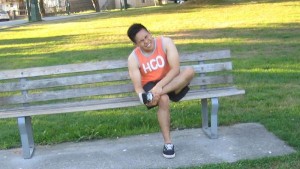Bone spurs are brought about by excess bony growth. It can exist for many years without triggering any symptoms. In such instances, treatment is not necessary. Nevertheless, the spurs might rub against adjacent structures such as tissues, nerves and muscles which results to swelling and pain.
If bone spurs develop close to the Achilles tendon, it can trigger discomfort during various movements. The treatment ranges from adequate rest or even surgery depending on the seriousness of the symptoms.
RICE method for Achilles bone spurs
Achilles bone spurs brushes against the adjacent tissues. This can result to the development of bursitis in the heel region. The condition generally affects the retrocalcaneal bursa near the heel where the calf muscle links to the heel bone.

The initial step is to lessen the inflammation which includes rest, application of ice, compression and elevation of the area. Anti-inflammatory drugs might be given if the swelling is significant.
Footwear modifications
Overuse or strenuous training can strain the Achilles tendon and the heel bone. Once these areas weaken, the bone spurs might develop to strengthen the heel bone.
When dealing with the symptoms, footwear adjustments might be required. This involves wearing additional padding in the shoes worn, using a heel cup to raise the heel or change the type of footwear used. Additionally, a podiatrist should be seen to assess the walking patterns and examine the arches. Orthotics that are used to fix any issues are designed to relieve the pressure from the heel and Achilles tendon.
Physical therapy
A strengthening regimen for the muscles surrounding the Achilles tendon is suggested. This helps in relieving the pressure from the tendon.
A mild stretching program should be followed to keep the area flexible as well as making it less prone to injury.
Surgical intervention
Once the conservative measures fail to work in relieving the symptoms of Achilles bone spurs, surgery is required.
Due to the poor blood supply in the area, recovery might take up to 3 months. After this period, physical therapy is necessary and it can take 1-2 years for the individual to return to pre-surgery level of activity.
